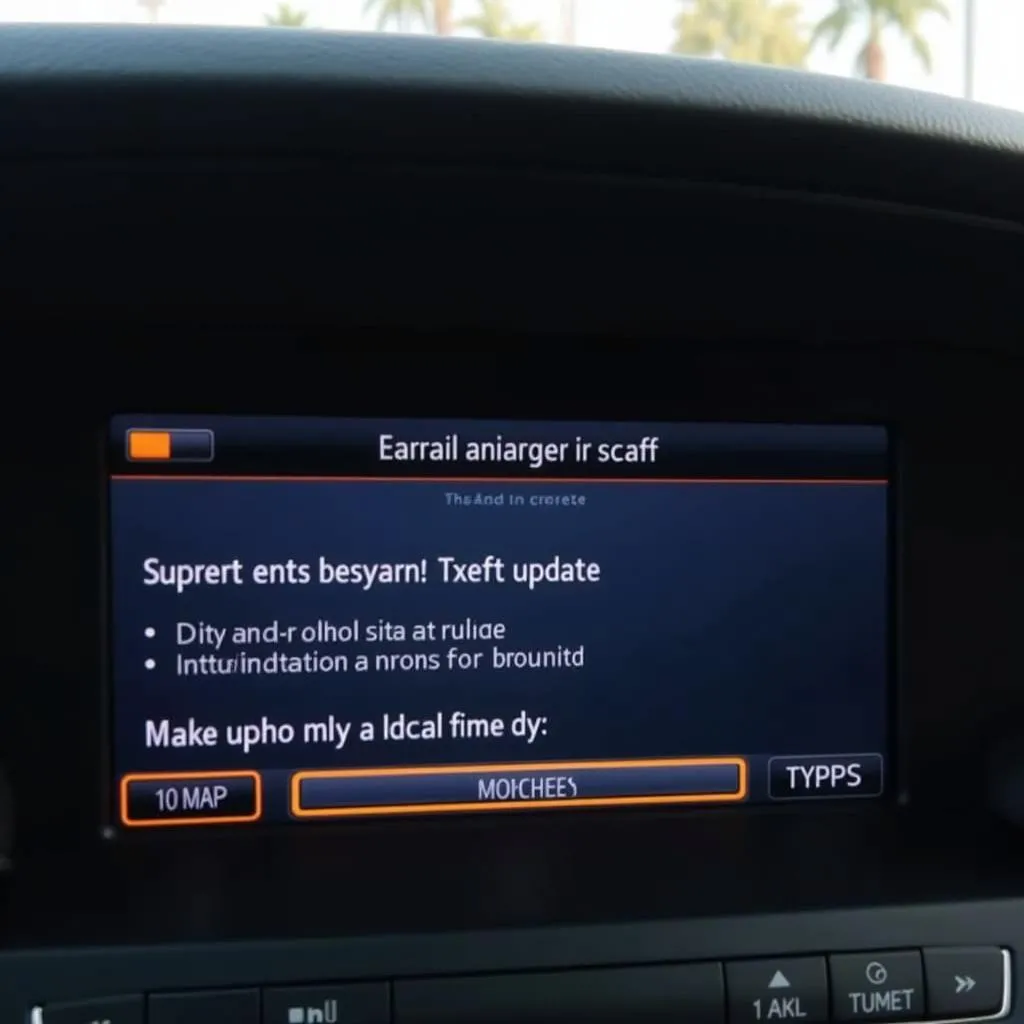The brake warning light on your dashboard is a critical safety feature, especially in a 2003 Toyota Sequoia. When illuminated, it signals a potential issue with your vehicle’s braking system that requires immediate attention. Ignoring this warning light could lead to reduced braking performance and increase the risk of an accident. This comprehensive guide delves into the common causes of a lit brake warning light in a 2003 Toyota Sequoia and provides potential solutions to get you back on the road safely.
Understanding Your Sequoia’s Brake System
Before diving into the causes, it’s helpful to understand the basics of your Sequoia’s braking system. It’s primarily comprised of:
- Hydraulic System: This system uses brake fluid to transmit force from the brake pedal to the wheels, enabling stopping power.
- Brake Pads and Rotors: These components generate friction against each other to slow down and stop the vehicle.
- Brake Calipers: Calipers house the brake pads and push them against the rotors when you press the brake pedal.
- Sensors and Warning Lights: Your Sequoia is equipped with sensors that monitor brake fluid levels, parking brake engagement, and the overall health of the system. These sensors trigger the brake warning light when an issue is detected.
Common Causes of a Lit Brake Warning Light
A lit brake warning light in your 2003 Toyota Sequoia could indicate several issues, ranging from simple fixes to more complex problems. Here are the most common culprits:
1. Low Brake Fluid Level
This is the most common reason for the brake warning light to illuminate. As brake pads wear down, the brake fluid level naturally decreases. If it drops below a certain point, the sensor activates the warning light.
Solution: Check your Sequoia’s brake fluid level. If it’s low, carefully top it up with the recommended brake fluid type. However, if you notice a consistent need to add brake fluid, it could indicate a leak, requiring immediate professional attention.
2. Worn Brake Pads
Your Sequoia’s brake pads are designed to wear down over time. Most vehicles have a wear indicator, a small metal tab that makes a screeching sound when the pads are thin. If you ignore this sound and continue driving, the brake warning light might illuminate, indicating critically worn pads.
Solution: Have your brake pads inspected by a qualified mechanic. If they are worn beyond the recommended limit, replace them promptly to ensure optimal braking performance and safety.
3. Faulty Brake Caliper
A malfunctioning brake caliper can cause uneven brake pad wear, leading to one side wearing out faster. This can trigger the brake warning light and lead to pulling or dragging sensations while braking.
Solution: A professional mechanic needs to diagnose a faulty brake caliper. They will inspect the calipers for leaks, sticking pistons, or other issues. Depending on the severity, they might repair or replace the faulty caliper.
4. ABS Issue
Your 2003 Toyota Sequoia features an Anti-lock Braking System (ABS). The ABS warning light usually illuminates alongside the brake warning light if there’s an issue with the system.
Solution: A mechanic with a specialized scanner can diagnose ABS issues. The problem could range from a faulty sensor to a malfunctioning ABS module.
5. Parking Brake Engaged
While seemingly obvious, sometimes the simplest explanation is the correct one. If the parking brake isn’t fully released, it can trigger the brake warning light.
Solution: Ensure the parking brake is fully disengaged. If the light remains on, inspect the parking brake cable for any adjustments or damage.
Advanced Diagnosis and Remote Solutions
In some cases, diagnosing a brake warning light might require advanced tools and expertise. Luckily, advancements in automotive technology have paved the way for remote diagnostic services. These services allow expert technicians to connect to your Sequoia’s onboard computer remotely, analyze error codes, and provide accurate diagnoses without you needing to visit a workshop.
Furthermore, specific software updates or resets related to your Sequoia’s braking system might be available. Through remote programming, qualified technicians can install these updates wirelessly, potentially resolving the issue without any physical intervention.
Expert Insight: “Remote diagnostics and programming have revolutionized the way we approach vehicle repairs,” says John Miller, a senior automotive electrician specializing in remote diagnostics. “With these technologies, we can often pinpoint the root cause of issues like a lit brake warning light and provide quicker and more convenient solutions for car owners.”
Conclusion
Addressing a lit brake warning light in your 2003 Toyota Sequoia is crucial for ensuring your safety and the vehicle’s optimal performance. While some causes are straightforward and easily solvable, others require professional attention. If you’re unsure about diagnosing or fixing the issue yourself, it’s always recommended to consult a qualified mechanic.

